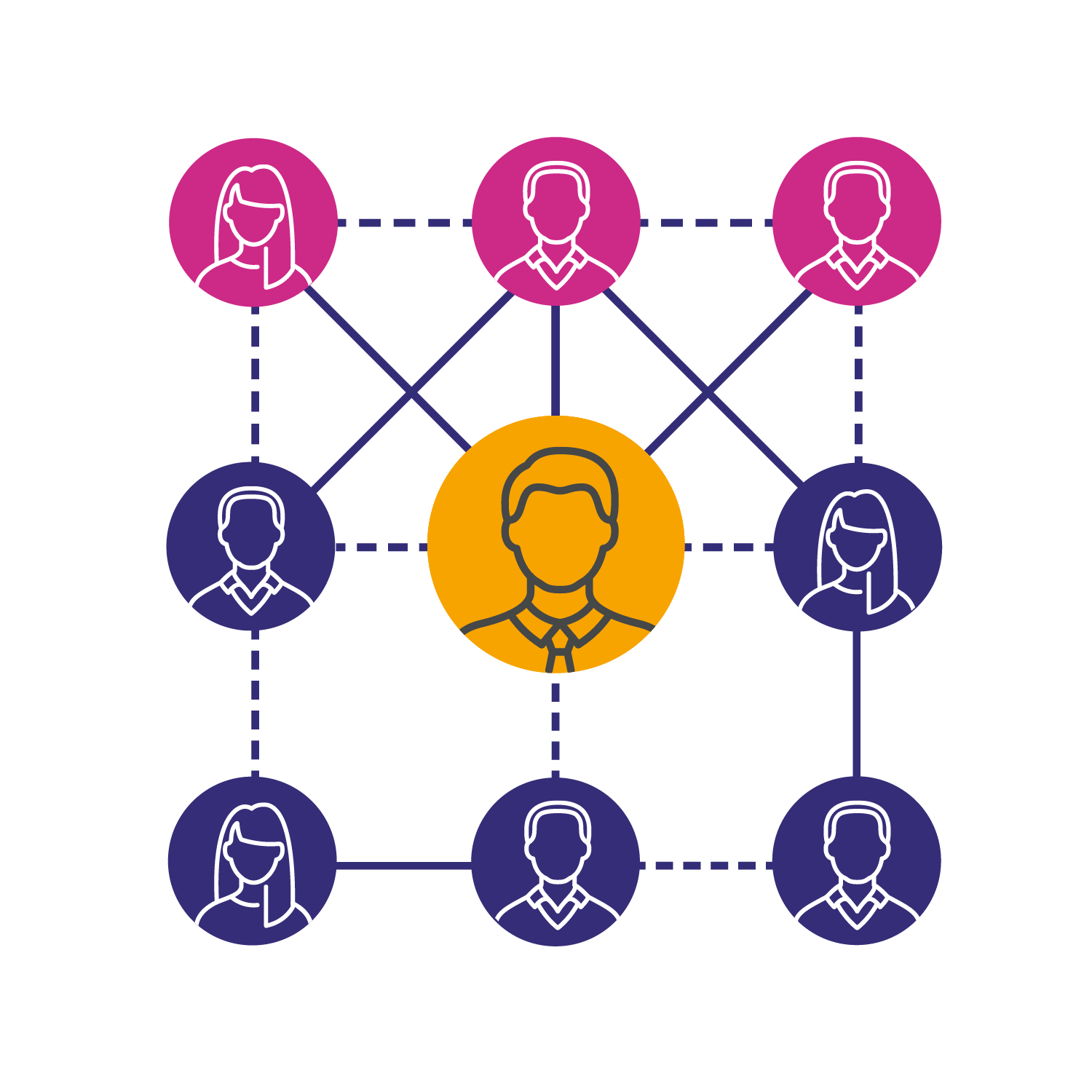Welcome to matrix management
We are seeing an upsurge in interest in our matrix management training at the moment. More and more organisations need to become more integrated. Sometimes this is driven by a need to improve internal processes and the ability to work horizontally to enable digital transformation (digital hates silos). At other times this is about sharing resources and unlocking synergies in tough economic times. For others it’s about serving global customers or running internal projects better.
We have seen a particular increase in interest from large and midsized technology companies who have grown fast and/or through acquisition in the good times and which now need to become more integrated, cost effective and connected. For some the matrix is new, for others it is evolving to become even more connected and interdependent.
Initially the focus tends to be on structure but fairly quickly people realise that they don’t solve the day-to-day challenges of operating a matrix through formal reporting lines. A focus on power and control and dotted and solid lines isn’t how things get done in reality.
Unlocking the potential of the matrix and helping people navigate it effectively starts with senior leaders creating clarity about why they are introducing the matrix. We always start here and in most cases, we find that it is not clear to people further down the organisation. It is important to be clear on the “why” because the kind of matrix you develop to support global customers might be very different from the one you use to deliver internal synergies.
Senior leaders also need to develop a different skill set for leading in an environment of multiple bosses, shared accountability and increased ambiguity. It requires them to enable the people below them to manage the day-to-day tensions of operating the matrix otherwise they experience high levels of escalation and delay.
The matrix is great at creating connection and breaking down the silos. The big trick strategically is how to achieve the benefits of this while staying agile and flexible – we do this through the skills of our people, not through changing reporting lines
The group most impacted by the matrix are what we call the “matrix middle”, the two or three layers down from the executive group who have to constantly navigate the world of multiples; multiple bosses, multiple teams and multiple stakeholders. They typically see challenges in five key areas
- Building the mindset – there are significant benefits in the matrix for both the organisation and the individuals within it as well as some key challenges. We help people understand the opportunities and the benefits for them personally which tends to accelerate acceptance of the change (for example, people working in the matrix report higher levels of engagement and see broader opportunities for career development).
- Finding good enough clarity in a more ambiguous environment – things are less clear in the world of multiples but how do we keep pushing back that ambiguity? In particular managers need to become comfortable with taking accountability in areas where they don’t necessarily have control over the resources.
- Simplifying collaboration – in a matrix there are potentially more people who could become involved in every issue. It is common in the early days to see an increase in the number of meetings and delays in decision making. It doesn’t have to be this way, but we do need to be more selective about who we involve in things
- Finding a new balance of control and empowerment – the matrix needs people at the point of intersection of reporting lines to have more autonomy to manage trade-offs and find the right balance. It is common in the early stages of a matrix to find higher levels of centralization, and this can slow things down. Managers need the skills to push back at this tendency and actively empower their people.
- Exercising influence without authority – the matrix undermines direct hierarchical control, and influence becomes a bigger part of a managers skill set. It is important to build these skills so that people don’t fall back on hierarchical and controlling behaviours that undermine the effectiveness of the matrix.
Having worked on dozens of matrix implementations from organisations with over a million employees down to organisations with around 100 we’ve developed a curriculum of facilitated workshops and training modules to help people on the journey towards effective matrix working. This can be tailored t your specific audiences.
You might enjoy our free webinar New Developments in Matrix Management
See more about our matrix management training and our most popular bite sized modules in this area.
Read our new book (September 2023) Making the Matrix Work – the Agile Remix

Explore our training programs to see how we can help.
Agile & Digital Training Matrix Management Training People and purpose Training Virtual Teams TrainingEducate yourself further with a few more or our online insights:
30 years of experience learning with a range of world class clients
We work with a wide range of clients from global multinationals to recent start-ups. Our audiences span all levels, from CEOs to operational teams around the world. Our tools and programs have been developed for diverse and demanding audiences.

Tailored training or off the shelf modules for your people development needs
We are deep content experts in remote, virtual and hybrid working, matrix management and agile & digital leadership. We are highly flexible in how we deliver our content and ideas. We can tailor content closely to your specific needs or deliver off the shelf bite sized modules based on our existing IP and 30 years of training experience.
For more about how we deliver our keynotes, workshops, live web seminars and online learning.